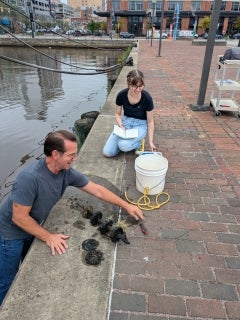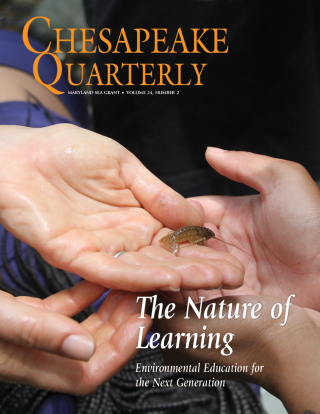Knauss legislative fellowships in Congress help build careers — and they're fun and educational. See our video and fact sheet for details.
The Power of Illustration in Scientific Communication
In the age where professional cameras can fit into the pocket of your jeans and artificial intelligence can create detailed images from a single prompt in seconds, the field of scientific illustration may seem like a remnant from the past. But as technology improves and our understanding of the natural world grows, so does our need to communicate complex information in clear, accurate, and compelling ways.
Scientific illustrations help illuminate details and describe processes that can’t be clearly shown in a single photo or passage of text. From childhood wonderment to professional research, every level of learning benefits from factual and thoughtfully designed scientific illustration.
As a recent graduate of the Johns Hopkins Medical and Biological Illustration graduate program, I had spent two years knee-deep in anatomical texts, creating illustrations and animations for surgeons, patients, and scientific researchers. I developed a passion for research—untangling complicated processes and finding effective solutions to communicate those findings to the target audience.
While the master’s degree program offered some opportunities for natural science projects, the focus was on medical science. Still, both tracks—medical and natural science—greatly appealed to my interests. So, when the opportunity arose to cut my teeth with natural science illustration in a professional setting at Maryland Sea Grant, I knew it was too good to pass up.
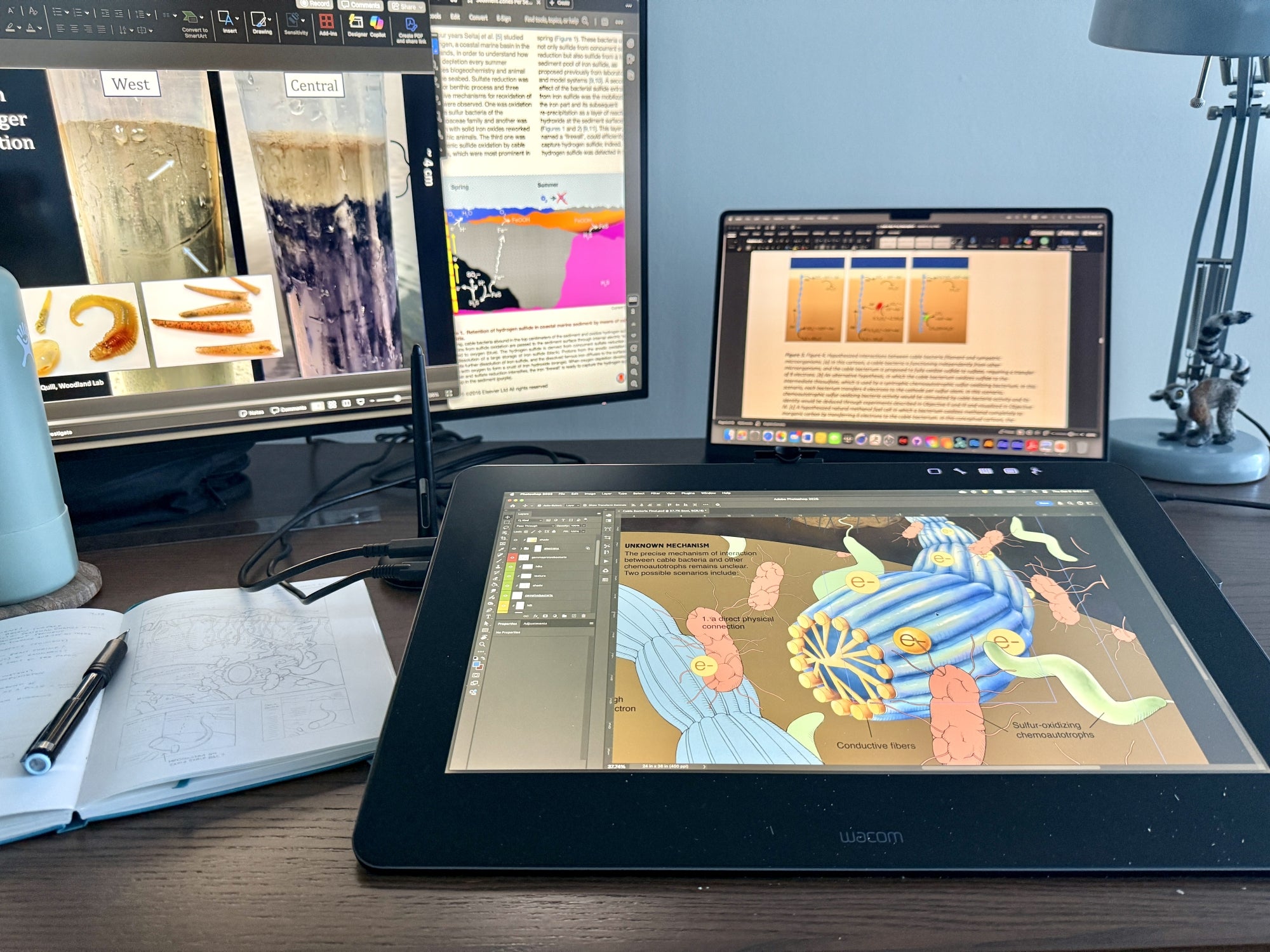
The artwork I created during my three-month internship spanned from the macro—a Maryland shoreline—to the micro—small microbes found at the bottom of the Chesapeake Bay. I am by no means an expert in any of these topics, but I had the opportunity to work with and visit local researchers and educators along the coast to ensure my visualizations were accurate and comprehensible.
I also joined the team with very little experience communicating with experts without assistance from a professor. I had to learn pretty quickly how to ask the right questions to ensure I got what I needed out of each meeting. There was some trial and error involved, but my ability to communicate my thoughts and foresee future trouble areas greatly improved during my internship.
I had the opportunity to work with Adam Frederick, assistant director for education at Maryland Sea Grant, on two projects. First, I designed an illustration for a Chesapeake Quarterly magazine article highlighting the Aquaculture in Action program. The illustration details both the set-up of the aquaculture tanks and the core skills students learn by participating in the project.
Next, I created a series of illustrations focusing on common creatures found in the Baltimore Harbor for the Biofilms and Biodiversity program. These microscopic animals are often semi-transparent, easily blend into their tiny environment, and can appear blurry in photographs. Singling out each animal on a biofilm disc in a high-definition illustration helps the viewer isolate particular features that will aid in identification of the species when encountered on their own biofilm sample.
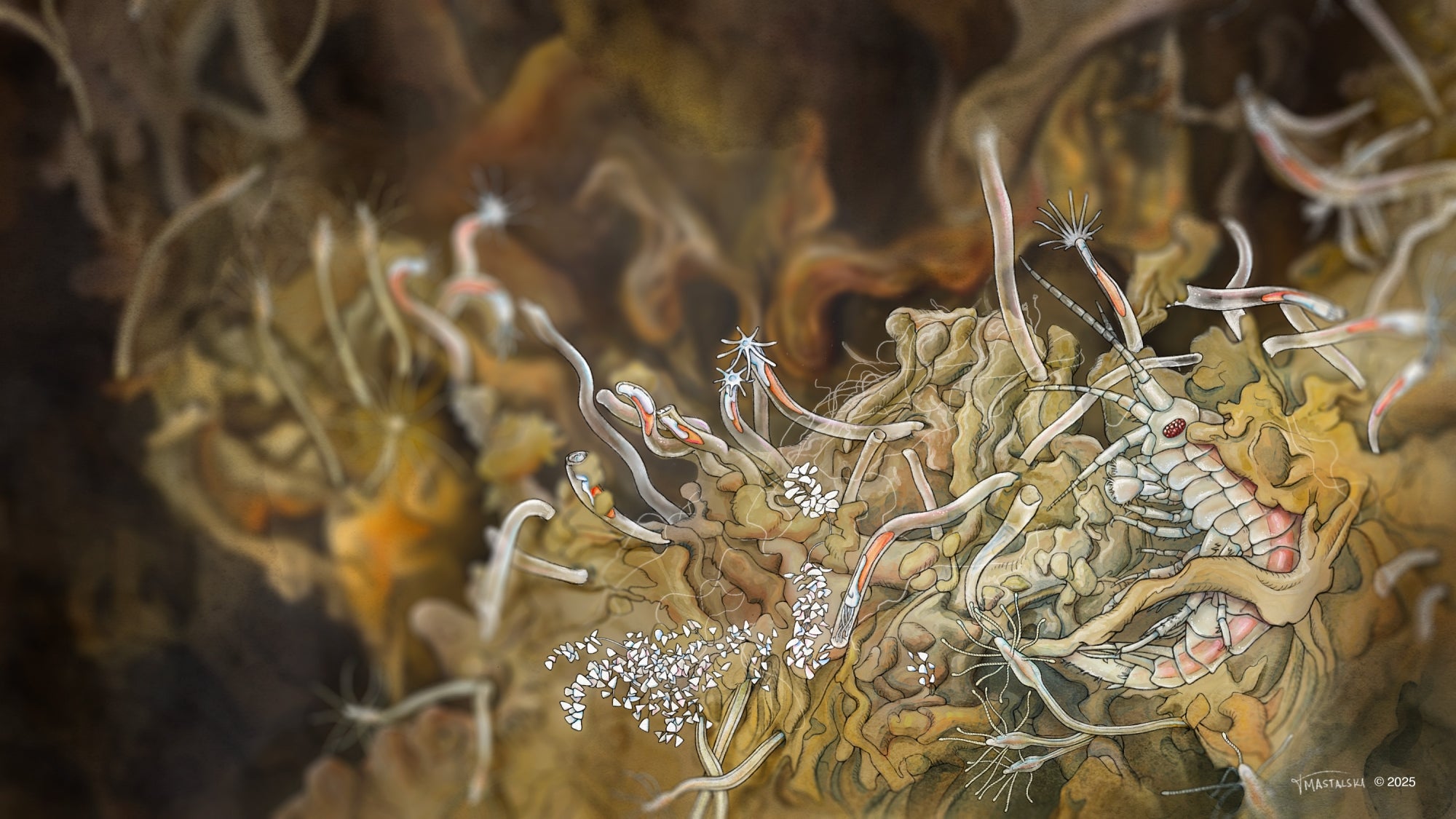
I worked with Erika Koontz, a soon-to-be graduate of the Marine, Estuarine, and Environmental Sciences graduate program at the University of Maryland Center for Environmental Science (UMCES). For her thesis on segmented sill living shorelines, I created an animation and companion illustrations highlighting the processes of accretion and erosion on a segmented sill and their impacts on the local habitat. We chose to create an animation as the moving images would help the audience better understand how the two processes change the shoreline over a span of time.
I collaborated with Sairah Malkin, an associate professor at UMCES’ Horn Point Laboratory, on a poster showing her latest research on how cable bacteria act as extension cords to stimulate other small sulfur-oxidizing microbes. As a leading expert in cable bacteria, Sairah can use this illustration to reach larger audiences and describe not only the cable bacteria, but how they interact with their environment.
Finally, I worked with my supervisor and assistant director for communications at Maryland Sea Grant, Annalise Kenney, to create coloring pages for outreach events. For younger coastal science enthusiasts, I created a page depicting some blue crab fishermen working the Bay. For the older folks, I created a page of wildlife that can be found in Maryland salt marshes. Each plant and critter is labeled with their common and scientific name, making this page as educational as it is meditative to color!
One highlight of this internship was my collaboration with researchers and content experts. Every one of them had so much enthusiasm, not only for their work but for the opportunity to see it come to life in an illustration. As none of the experts had worked with an illustrator before, there was a learning curve for both them and me.
Before coming to Maryland Sea Grant, I was in a graduate school bubble, surrounded by talented medical illustrators and working with experts who were used to working with illustrators. During this internship, I was reminded of the impact scientific illustrations have, not only on public audiences but on the researchers themselves. Few professionals get to work with illustrators in this way, but the impact a well-thought-out illustration can make for someone trying to communicate their research to a broader audience is incredible.
The need for this kind of work was evident on my first day; I was given a lengthy list of researchers who had answered my supervisor's open call for a scientific illustration opportunity. Every idea was strong, with solid reasons for how an illustration could benefit their work. I knew I wasn’t able to complete every project, but I was determined to address as many as I could.
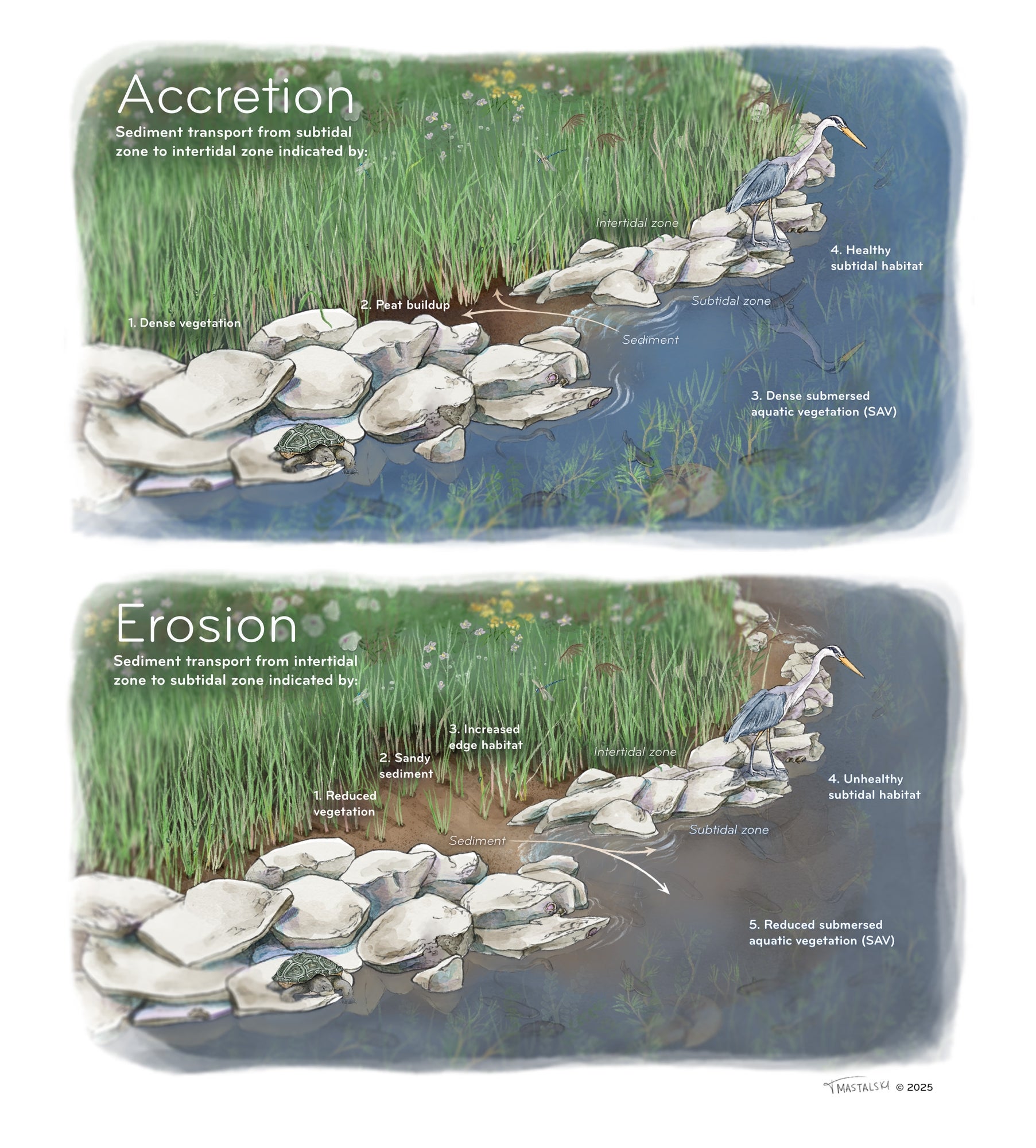
In an increasingly complex world, scientific illustrations help bridge the gaps between research and communication. They allow scientific findings to be shared with and understood by larger audiences, raising our collective curiosity for the natural world. During this internship, I had the opportunity to grow my knowledge in several micro and macro processes important to Maryland water systems and figure out the best ways to communicate those ideas. I will carry the skills I developed during this internship, including communication, graphic design, and time management, with me in my future work. I have no doubt both my scientific curiosity and artistic capabilities have improved thanks to my work here at Maryland Sea Grant.
See all posts to the Fellowship Experiences blog
